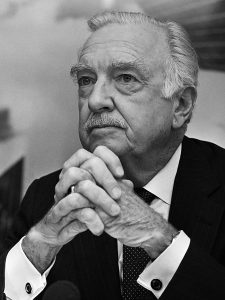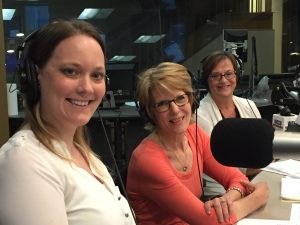
Hey and how are ya? C’mon in, grab a cup of coffee. Thanks for stopping by to my Healthy Matters home.
Today I’m going to talk about Health Care Homes, aka Medical Homes, aka the Next-Generation-of-Medical-Delivery, aka the Clinic-Where-Everybody-Knows-Your-Name, aka the World’s Greatest Clinic Idea, aka the Clinic-System-We-All-Wish-We-Had.
You may have heard, but probably not, about Medical Homes. It is a term that has appeared in the past few years, really gaining traction around 2010 when the Affordable Care Act became law in the United States. Medical homes are an attempt to make the health care system more patient-friendly, less fragmented, easier to navigate, and more cost-effective.
To start, please watch the following video about the HCMC Coordinated Care Clinic, a nationally-recognized and award-winning program in the Health Care Home model. The doctor in the video (Dr. Paul Johnson) was and is a colleague and teacher of mine. He’s wicked smart and simply an awesome doctor.
Walter Cronkite and Laura Ingalls Wilder
Now consider these two quotes:
“America’s health care system is neither healthy, caring, nor a system”
“Home is the nicest word there is”

Public domain via Wikimedia Commons

Photo: Public domain via Nationaal Archief, the Dutch National Archives
Now consider the clinic or doctor’s office where you get your medical care. Do the sentiments of Walter Cronkite or those of Laura Ingalls Wilder seem more applicable to your clinic? My guess is that you don’t think of your clinic in home-like terms. Most people think of agonizing delays on the phone scheduling an appointment, reading 3-year old magazines in the waiting room for way too long, seeing a doctor who barely has time to say hello, getting shots, blood draws, and all sorts of various and sundry unpleasantries. And for women there are the dreaded stirrups (ahem, I mean foot rests) which were apparently inspired by medieval-era people hanging around castle dungeons.
Wouldn’t it be great if your medical clinic was . . . . let’s see, how to say it . . . . let’s just go with . . . . better?
Introducing the Health Care Home
This is where our health care delivery system is going here in the United States. I say “in the United States” because contrary to what many of us here, other countries have systems of health care that in many ways are much better than we have. Walter Cronkite was onto something. In fact, I welcome comments from people with experience in other countries about how your system of primary care works. (Fun fact: there have been people from over 60 countries checking in with us here at this Healthy Mattters blog!)
So channel your inner Laura Ingalls Wilder. “Home is the nicest word there is” – OK a bit cheesy but roll with it – after all she lived in a sod-house on the prairie or some such thing. What would a better clinic system look like? How could you make it more like your health care home?
Here’s what I think a more home-like clinic would look like:
- Team-based care. If my doctor is out one day, there are others who know who I am and what my medical needs are.
- I have access to specialists I need, with someone to help me navigate the complex system.
- People who can help me stay healthy, not just treat me when I am sick.
- A system that is coordinated so that it is easy for me to get care not only in the clinic, but also when I need to be in the hospital, or a nursing home, or even when I need care in my own home.
- The system is centered around me. Access to the clinic is available when it is best for me, not when it is best for my doctor. Maybe I need to talk to someone late at night. Or see someone on a weekend. Or maybe I prefer to communicate electronically by e-mail.
- The system is held accountable for providing high-quality care.
- Most of all, the system helps me make health care decisions that are best for me.
That last one is important. In fact, Health Care Homes used to be known as “Patient-Centered Medical Homes” though I haven’t heard that name much lately. Maybe it fell out of favor because it implied like any clinic that was not a Health Care Home was inherently not patient-centered. And nobody wanted that label!
Health care homes were part of the Affordable Care Act
Whatever you think of the ACA of 2010 (aka “Obamacare”), one thing to note is that there is a specific provision in it to support states’ efforts in setting up Health Care Homes. This was done largely for Medicaid (government-assisted) programs, but it is applicable everywhere.
My own state of Minnesota was ahead of the curve. In 2008, Minnesota started its own program to help fund clinics wanting to be certified as a health care home. (For the rest of this post, I’ll use HCH to mean Health Care Home since I’m getting sick of typing it all out. Lazy me). HCH in Minnesota are coordinated through the Minnesota Department of Health. If you’ll forgive a bit of biased editorializing here, I’m always amazed at how well Minnesota does health care. I’d say that not only do we in Minnesota have some of the best health care in the country on the whole (but also some of the worst health care disparities for some groups – a huge topic that I feel strongly about and will talk about in a later post), but we have undoubtedly one of the finest public health departments in the country. The Minnesota Department of Health is simply the best at what they do. Check them out at the MDH site. They’re a great resource even if you are not from Minnesota.
HCH on the radio!
 We did something a little different on the Healthy Matters radio broadcast this week. Rather than cover a common medical topic, or take your calls about health issues, I invited a few guests who are experts on HCH to the studio. There they are in the WCCO studio in downtown Minneapolis, Minnesota:
We did something a little different on the Healthy Matters radio broadcast this week. Rather than cover a common medical topic, or take your calls about health issues, I invited a few guests who are experts on HCH to the studio. There they are in the WCCO studio in downtown Minneapolis, Minnesota:
- Kristen Godfrey Walters, Hennepin County Medical Center, Program Manager for Health Care Homes
- Danette Holznagel, Minnesota Department of Health, Nurse Planner, Health Care Homes, Northern Minnesota District
- Bonnie LaPlante, Minnesota Department of Health, Director of Health Care Homes
You can listen to the podcast of the show by clicking: HealthyMatters – Health Care Homes Podcast #playitNOW. Especially if you are interested in health care delivery, how public policy works, or are curious as to how one state (Minnesota) implements a new model of health care, you should consider listening!
Health care homes in Minnesota: one state’s experience
Minnesota has over 360 certified HCH (get the list of certified HCH here – see if your clinic is there!). Certification is voluntary, so it is terrific that over half the clinics in the state have achieved certification. To be certified, several standards have to be met:
- Access & communication
- Patient tracking and registry functions
- Care coordination
- Care plans
- Performance reporting and Quality Improvement
Clinics are required to show that they are making improvements in each of these areas to be certified.
The HCH are scattered across all of the state of Minnesota, but as we learned on the radio broadcast, the metro area has many HCH-certified clinics, while some areas outside the Minneapolis-St. Paul area have fewer. We talked about this on the air, and I encourage you listen to the podcast to hear the experts from the Minnesota Department of Health address some successes and challenges in rural and small-town Minnesota. She gives an inspiring story about how a solo doctor in Cold Spring, Minnesota is making it work in a smaller community.
Not from Minnesota? Then I encourage you to look at your own state’s department of health site and do a little digging about where the HCHs are in your community!
Economic benefits of Health Care Homes
So sounds expensive, eh?
Perhaps not.
Dr. Ed Ehlinger is Commissioner of the Minnesota Department of Health and a man I know to be an accomplished doctor, a thought-leader on public health issues, and a terrific guy. Dr. Ehlinger said about HCH:
“You save one hospitalization, you save a lot of resources”
True that.
There are studies that have shown an economic benefit from the HCH model. Check out this article from the Minneapolis Star Tribune which reports on the Minnesota experience that showed a $1 billion savings to the state. That piece noted that in Minnesota:
“A patient receiving primary care from a health care home was less likely to need a lengthy hospital stay between 2010 and 2014, and rang up only $7,216 in medical expenses per year — 9 percent less than a patient receiving traditional primary care. “
HCMC, my medical home
I typed that heading above and immediately started humming “My Old Kentucky Home.” Bringing that up for no reason whatsoever (I’m sort of an unfiltered “stream-of-consciousness” guy).
But really, HCMC in Minneapolis is where I practice and where 13 of our clinics are certified Health Care Homes. Check out the clinics at HCMC by clicking the logo, or you can always call 612-873-MYMD (612-873-6963).
If I could brag a little bit, we are really good at this.
- Our care is coordinated through the most advanced electronic health records in the country (we were one of the earliest adopters of a robust electronic health record over 10 years ago and now that most other systems in the upper Midwest have followed as well, we are connected to nearly everybody in region!).
- We have Care Coordinators to help navigate the system.
- We have interpreters for those who do not speak English and special programs for certain populations. I hope you’ll listen to the Podcast to hear a shout out for the award-winning Aqui Para Ti program for Spanish-speaking youth. Or learn more about Aqua Para Ti here.
- We have flexible scheduling and hours of availability.
- We are committed to Patient- and Family-Centered Care through our “Centered Around You” program.
- We have outstanding medical outcomes and we measure that success.
- And most of all, we have teams of caregivers who know you.
Just like at home!
Leave me a comment. Subscribe to the blog. Thanks for checking in.
David
